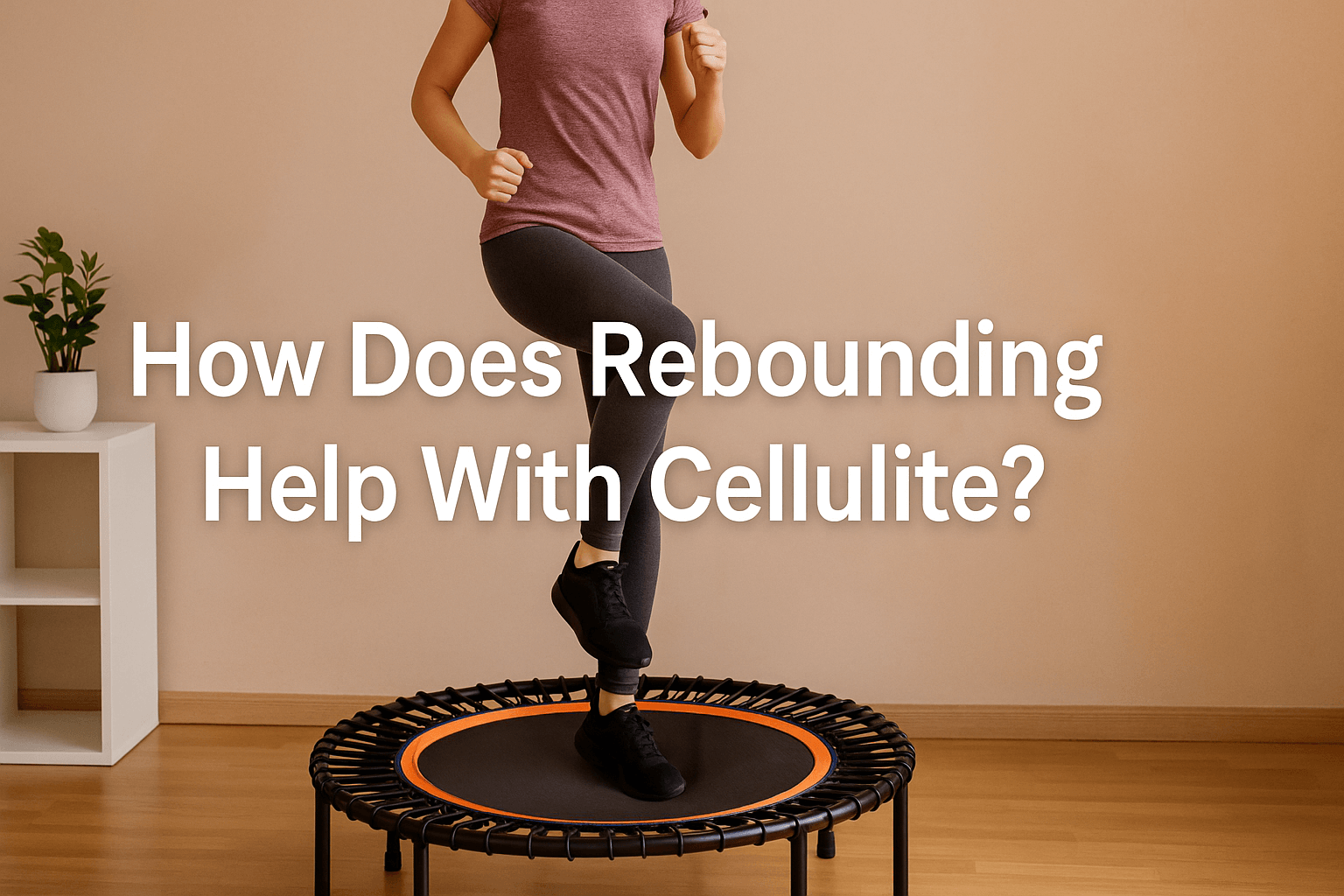
How Does Rebounding Help With Cellulite?
Ever wished cellulite had an ‘off’ switch? The short answer: a therapeutic rebounder helps by boosting circulation, drainage, and muscle tone. It’s fun, bouncy, and surprisingly effective. Stick around—we’ll share how a little trampoline magic can smooth skin and lift both mood and thighs!
The Root Causes of Cellulite
What is Cellulite?
Cellulite is something almost every mum whispers about but very few of us talk openly about. Those little dimples on the thighs, hips, or bum can feel stubborn no matter how many lotions or diets we’ve tried.
The truth? It’s common, normal, and not a sign you’re doing anything wrong. Still, that doesn’t mean it doesn’t chip away at confidence from time to time.
The Role of Fat Cells and Connective Tissue
Cellulite forms when fat cells push up against the skin while connective tissue holds firm. Imagine a mattress where some springs poke through more than others—that’s basically what’s happening under the skin.
No wonder creams and quick fixes don’t always work. To see real changes, you need to target the systems inside your body—not just the surface.

How Rebounding Targets Cellulite
Enhancing Lymphatic Drainage and Detoxification
When I first stepped on a rebounder, I thought I’d just signed up for a kids’ birthday party. But the bounce does far more than make you laugh—it gives your lymphatic system a serious workout.
Flushing out Toxins and Waste
The up-and-down motion works like a natural pump, helping your body clear out toxins and excess fluid. Less fluid build-up means smoother-looking skin. It’s like giving your body a daily spring clean.
Improving Blood Circulation
Bouncing also sends blood rushing to the skin, carrying oxygen and nutrients. Over time, this improves elasticity and firmness. Think of it as delivering fresh supplies to a tired construction site—suddenly everything looks stronger and fresher.

Toning Muscles and Firming Skin
A therapeutic rebounder makes those muscles work without punishing your joints.
Strengthening the Lower Body
Simple moves—like squats, high knees, or just marching in place—wake up muscles you didn’t know were snoozing. As they firm up, skin starts to look smoother. It’s a double win: toned legs and less noticeable dimples.
Increasing Collagen Production
Stronger circulation means more collagen, which is like scaffolding for the skin. With more support underneath, skin looks tighter and more youthful.
The Connection to Weight Management
Let’s be honest—balancing kids, meals, and the chaos of everyday life doesn’t leave much time for the gym. That’s where rebounding shines.
Burning Calories and Boosting Metabolism
Just 15 minutes of bouncing can torch calories quickly, helping to prevent fat cells from pressing against connective tissue in the first place. It’s metabolism-boosting, fat-burning, and oddly joyful all at once.
My Rebounding Journey: From Sceptic to Believer
I stumbled across rebounding while hunting for quick home workouts. At first, I thought, “Really? Jumping on a mini trampoline is going to fix this?” But after a few weeks, I noticed smoother skin and a surprising lift in my mood.
Within a month, my thighs felt tighter and my skin looked firmer. It wasn’t magic—it was consistency. A few short sessions, squeezed between school runs and laundry, really did make a difference.

My Top Rebounding Exercises for Cellulite Reduction
Basic Bouncing Routine
Stand with feet shoulder-width apart, knees soft, and bounce gently. Five to ten minutes a day is enough to get things moving.
Targeted Leg and Thigh Movements
Add in squats, high knees, or marching to really work on cellulite-prone areas.
Creating a Weekly Routine
Aim for 3–4 sessions a week, 15–20 minutes each. Mix up the moves so it never feels boring, and keep it consistent—your body will thank you.
Conclusion: Your Rebounding Journey Starts Here
So, does rebounding help with cellulite? Yes—and it goes beyond that. It boosts lymphatic drainage, improves circulation, tones muscles, and helps manage weight. Plus, it’s a form of exercise that feels more like play than punishment.
If you’re looking for a way to feel fitter, smoother, and more energised, a therapeutic rebounder might just be your new best friend.
⚠️ Disclaimer: This article is for informational use only and not medical advice. Always consult a healthcare professional before starting any new exercise programme.
Have you checked out our other posts?
How Does Rebounding Change Your Body?
How Does Rebounding Help Lipedema?




Leave a comment